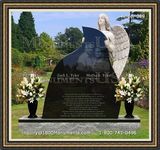|
What To Notice When Learning Traditions For Jewish Funeral
It is a Jewish funeral traditions not to leave the deceased unattended. The family or those conducting the funeral services must provide a Shomer, or watchmen, who will sit with the body until the burial. The very first person to be called upon a death is the rabbi, who decides upon a time for funeral proceedings. Funerals are typically held in the temple or synagogue, although many Jewish families are now opting for a graveside service only.
Jews do not believe in viewing the body after death; it is disrespectful because the deceased person cannot look back at you. Therefore, Jewish funerals are usually closed casket.
Embalming, a process used for sanitation and temporary preservation, is avoided unless it is required by local law. The sacred society, or the Chevra Kadisha usually take on the role of preparing the body. This is a group of pious Jewish followers who perform the Jewish Taharah, or purification.
The body is first ritually bathed and then dressed in the Tachrichim, or shrouds, the traditional burial garment. It is a simple white garment that contains no pockets. This symbolizes the fact that the deceased takes nothing with them when they depart this world and that God will not judge on material possessions but rather their deeds and merits.
Families are able to choose their own caskets and make decisions regarding funeral details, however Jewish custom calls for wooden caskets with no metal and no flowers at the funeral.
The actual funeral itself lasts around 20 or 30 minutes and consists of a reading of Psalms, other Scripture readings, and the eulogy. Either before or after the services, mourners perform K'riah, the rendering of the garment. While some mourners will tear their clothes, many people today simply attach a black ribbon to their clothing. As you can see, there are many Jewish funeral traditions that mourners of other faiths do not follow.
|
|



























